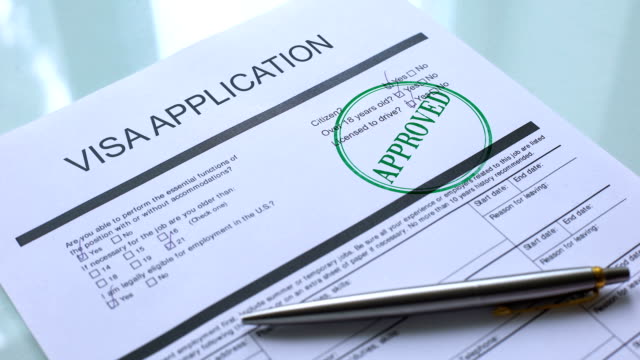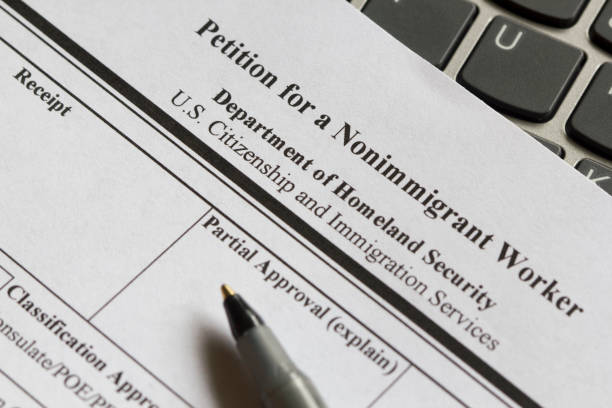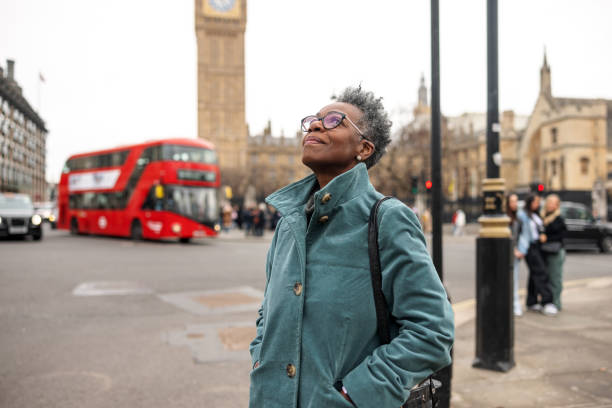Immigrating to the U.S. Without a Job Offer: A Complete Guide
The United States is a top destination for individuals seeking new opportunities, career advancements, and a higher quality of life. However, navigating the immigration process without a job offer can be challenging. While a job offer often simplifies the visa process, there are alternative pathways that allow individuals to immigrate to the U.S. even without one. This guide explores the various visa options, requirements, and strategic tips for immigrating to the U.S. without securing employment first.
Get to Understand the Need for Employment-Based Visas
For many, the most straightforward route to the U.S. is through employment-based visas, like the H-1B, which requires a valid job offer from a U.S. employer. However, not everyone has the opportunity to secure employment before moving. Fortunately, the U.S. immigration system has several options available for individuals without a job offer, though these pathways require alternative qualifications, such as family connections, investment capital, or special skills.

Non-Employment-Based Immigration Options
Family-Based Immigration
The family-based immigration pathway allows certain family members of U.S. citizens or lawful permanent residents to immigrate to the United States. Here’s a breakdown of eligible family relationships for this immigration route:
- Immediate Relatives: Includes spouses, parents, and unmarried children under 21 of U.S. citizens. There is no annual cap on visas for immediate relatives.
- Family Preference Categories: Includes siblings of U.S. citizens, unmarried children over 21 of U.S. citizens, and spouses and children of permanent residents. These categories have annual caps, meaning there may be waiting periods for visa availability.
Requirements for Family-Based Immigration:
- A qualifying relative must file a petition on behalf of the immigrant.
- The sponsor must meet income requirements to ensure financial support for the immigrant.
Steps to Apply for Family-Based Immigration:
- File Form I-130 (Petition for Alien Relative): Your U.S. relative must complete and file this form with U.S. Citizenship and Immigration Services (USCIS) on your behalf.
- Wait for Approval and Visa Availability: Immediate relatives proceed directly to visa processing. For family preference categories, check the U.S. Department of State’s Visa Bulletin monthly to understand waiting periods.
- Attend Consular Processing or Adjust Status: If you are outside the U.S., attend an interview at your local consulate. Those already in the U.S. may apply for adjustment of status by filing Form I-485.
Diversity Visa Lottery Program
The Diversity Visa Lottery, also known as the Green Card Lottery, is a popular immigration option for individuals from countries with low rates of immigration to the U.S. This program grants up to 55,000 visas each year through a random lottery selection process.
Key Points:
- Eligibility: Applicants must be from an eligible country, which varies yearly, and must meet specific education or work experience requirements.
- Application Process: Interested applicants must apply online during the registration period and undergo a background check and interview if selected.
Application Process:
- Submit an Online Application: Applications are accepted annually during a designated period. It’s free to apply through the official DV Lottery website.
- Complete Required Background Checks: If selected, you must submit detailed personal information, undergo background checks, and attend an interview at a U.S. consulate.
- Attend Visa Interview and Medical Exam: Selected individuals and their dependents must attend a consular interview and pass a medical examination before receiving a visa.
Key Resources:
- DV Lottery Official Website
- Occupational Requirements for DV Eligibility
Asylum and Refugee Programs
The U.S. offers protection to individuals facing persecution or fear of persecution in their home countries. If granted asylum or refugee status, individuals can live and work in the U.S. without needing a job offer.
Differences Between Asylum and Refugee Status:
- Asylum: For individuals already in the U.S. or seeking entry at a port of entry.
- Refugee: For individuals outside the U.S. seeking to enter as refugees.

Specialized Visa Options
Investor Visa (EB-5)
The EB-5 Immigrant Investor Program offers a direct pathway to U.S. residency for individuals willing to make a substantial financial investment.
Requirements:
- Minimum investment of $1.05 million (or $800,000 in targeted employment areas) in a new commercial enterprise.
- Creation of at least ten full-time jobs for U.S. workers within two years of investment.
Benefits:
- Direct path to a Green Card, allowing the investor, their spouse, and unmarried children under 21 to reside in the U.S.
- No need for a job offer or employer sponsorship.
Application Steps:
- File Form I-526 (Immigrant Petition by Alien Investor): Submit your petition, detailing the investment and job creation plans.
- Provide Evidence of Investment Source: Demonstrate that the investment funds were obtained lawfully.
- Complete Consular Processing or Adjust Status: Upon approval, proceed with consular processing if outside the U.S., or file for adjustment of status if already in the country.
Student Visa (F-1)
For individuals interested in studying in the U.S., the F-1 visa allows for full-time enrollment in an accredited institution.
Advantages of the F-1 Visa:
- Optional Practical Training (OPT): F-1 students may work in their field of study for up to 12 months (or 36 months for STEM fields) post-graduation.
- Networking Opportunities: Attending a U.S. university can help build valuable connections, potentially leading to job opportunities and other visa sponsorships in the future.
Steps to Apply:
- Get Accepted to a U.S. School: Apply to and receive an acceptance letter from an accredited U.S. institution approved by the Student and Exchange Visitor Program (SEVP).
- Apply for the F-1 Visa: Complete Form DS-160, pay the SEVIS fee, and attend an interview at a U.S. embassy or consulate.
- Plan for OPT or Transition to H-1B: After completing your degree, apply for OPT to gain practical experience in your field, which may lead to a job offer and eventual visa sponsorship.
Exchange Visitor Visa (J-1)
The J-1 visa allows individuals to participate in exchange programs, including study and work exchange, internships, and research programs.
Programs Available:
- Internships: Useful for recent graduates and students seeking professional experience.
- Au Pair Program: Allows young adults to live with a U.S. family and provide childcare.
- Trainee Programs: For individuals with a degree or professional experience in their field.
Limitations:
- Some J-1 visa holders may be required to return to their home country for two years before applying for another U.S. visa, depending on the program and funding source.

Temporary Residency and Other Pathways
B-2 Visitor Visa
The B-2 visitor visa allows individuals to travel to the U.S. for tourism, medical treatment, or visiting friends and family. While it does not allow for employment, it can serve as a temporary option for those who want to explore the U.S. before considering long-term immigration options.
Limitations:
- The B-2 visa strictly prohibits employment.
- Typical duration of stay is up to six months, though extensions may be possible under certain circumstances.
How to Apply:
- Complete Form DS-160 (Nonimmigrant Visa Application): Submit the application online and pay the required fee.
- Attend Consular Interview: Applicants must demonstrate intent to return to their home country and sufficient financial resources for their visit.
Visa Waiver Program (VWP)
The Visa Waiver Program (VWP) enables citizens from certain countries to enter the U.S. for tourism or business without a visa for stays of up to 90 days.
Eligibility Requirements:
- Must hold citizenship from an eligible country.
- Requires an approved Electronic System for Travel Authorization (ESTA) prior to travel.
Tips for Increasing Your Chances of Successful Immigration
- Seek Legal Advice: Consult an immigration lawyer or certified immigration consultant to guide you through complex visa requirements and increase your chances of success.
- Prepare Comprehensive Documentation: Regardless of the visa type, accurate and complete documentation is essential. Keep copies of all submitted documents, and be prepared to provide additional information if requested.
- Utilize Educational and Professional Networks: For F-1 and J-1 visa holders, building a professional network can open up pathways for future employment, which may ease the transition to a long-term visa or permanent residency.
- Consider Family Sponsorship Options: If you have relatives who are U.S. citizens or permanent residents, exploring family-based immigration avenues may offer a faster route.
- Stay Informed About Policy Changes: U.S. immigration policies frequently change, so stay updated on relevant laws, quotas, and visa requirements to ensure your application remains compliant.
FAQs: Immigrating to the U.S. Without a Job Offer
Q: Can I immigrate to the U.S. on a tourist visa and then find a job?
A: No, a tourist visa (B-2) does not permit employment. To work in the U.S., you’ll need a work-authorized visa, such as an H-1B, which requires employer sponsorship.
Q: How much does it cost to immigrate to the U.S. through the EB-5 Investor Visa?
A: The minimum investment is $1.05 million or $800,000 in targeted areas, plus associated legal and application fees.
Q: Can I transition from an F-1 Student Visa to a work visa?
A: Yes, many students transition to work visas like the H-1B after graduation through the OPT program, which allows for temporary employment in their field of study.
Q: How do I qualify for the Diversity Visa Lottery?
A: Applicants must be from an eligible country, have at least a high school education or two years of work experience, and meet other specific criteria listed by the U.S. Department of State.
Q: Are there age restrictions for applying for a U.S. visa?
A: No, there are no age restrictions, though applicants under 18 may need parental sponsorship depending on the visa type.
Q: What is the average wait time for family-based visas?
A: Wait times vary depending on the visa category and country of origin. Immediate relatives often have shorter wait times than those in family preference categories.


